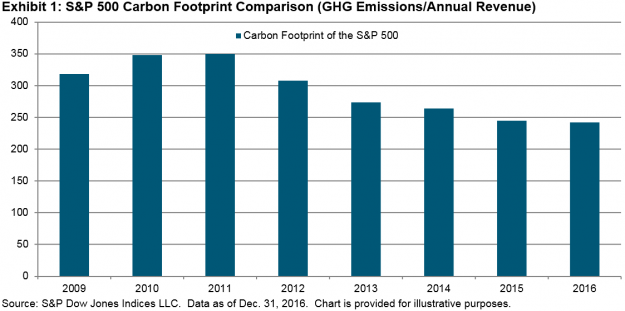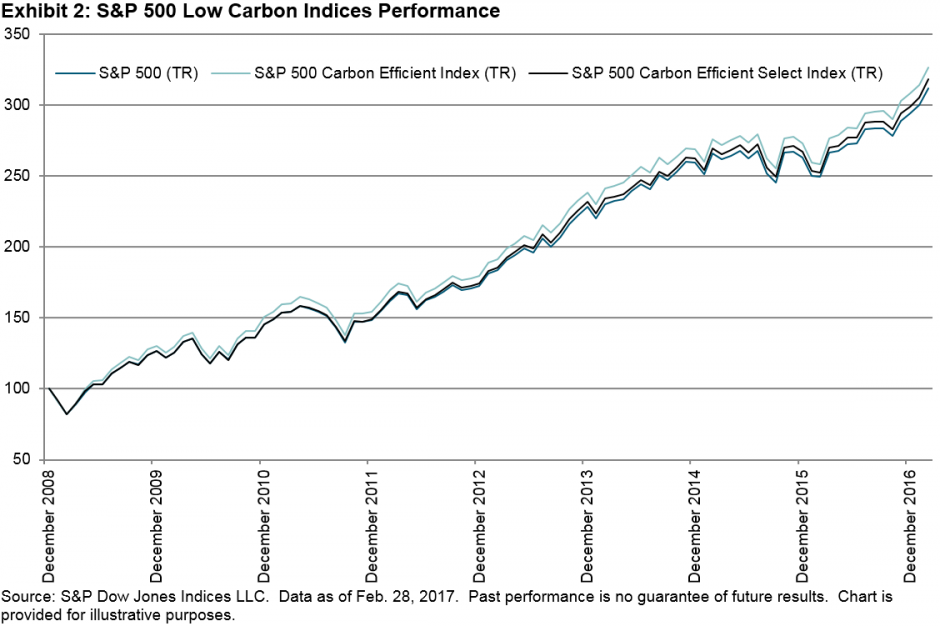One of the objectives of low volatility strategies is to provide higher risk-adjusted returns than their respective benchmarks over the long run, primarily by reducing drawdowns during market downturns. In the U.S. market, both the S&P 500® Low Volatility Index and the S&P 500 Minimum Volatility Index have shown outperformance over the S&P 500, not just on a risk-adjusted basis, but also in absolute terms (see Exhibit 4 of Inside Low Volatility Indices). To understand how the volatility strategies performed in the most significant down markets, we look at the three largest drawdowns of the S&P 500 since 1990:

In all three drawdown periods, the low-risk strategies outperformed the benchmark. In the financial crisis (2007-2009), the S&P 500 Low Volatility Index outperformed the S&P 500 by over 15% and the S&P 500 Minimum Volatility Index outperformed by more than 6%. The return differential during the tech bust (2000-2002) was more extreme, with the minimum volatility outperforming by 30% and the low volatility index outperforming by 50%. During the Russian currency crisis (1998), the S&P 500 dropped 19% in under two months, and the low-risk strategies were again able to limit losses.
Did the low-risk indices outperform during the market downturns for the same reasons, or did the methodology differences (as outlined in a previous post) lead to different sources of excess return? A common approach to analyzing this is to run a sector-based performance attribution, which breaks down the total excess return of a portfolio versus a benchmark between an allocation effect and a selection (+ interaction) effect. The allocation effect will show the effect of over- or underweighting a sector relative to a benchmark, while the selection effect will show the effect of over- or underweighting individual securities within a sector relative to the benchmark. The sector-based attribution results for the low-risk strategies during each of the three largest drawdowns of the S&P 500 are shown in the following exhibits, with the sector that had the highest total effect highlighted for each index.



During the largest drawdown, the financials sector was the largest contributor to excess return for both volatility strategies, with a total effect of 3.91% in the S&P 500 Minimum Volatility Index and 7.04% in the S&P 500 Low Volatility Index. While both outperformed, the allocation and selection effect figures show contrasting reasons for the outperformance. In the minimum volatility index, the allocation effect for financials was negative (-1.50%), as the financials sector in the S&P 500 underperformed, and the minimum volatility index had an average sector weight higher than the benchmark. However, it was successful in selecting or weighting securities within the sector (selection effect of 5.41). In the low volatility index, the financials sector’s weight was significantly reduced during the period, with an average weight of 9.23% lower than the S&P 500. The underweight led to an allocation effect of 4.86%, while the selection effect contributed 2.17%.
The second-largest drawdown (tech bust) highlights the methodological differences for sector diversification. Both low volatility strategies allocated away from information technology, but the minimum volatility index sector constraints (±5% relative to the benchmark at rebalancing), whereas the low volatility index can move completely out of a sector. This occurred for the information technology sector in the low volatility index, which lead to a total effect of 18.39%.
What is evident in examining the drawdown periods is that the majority of outperformance can come from different effects for the two low-risk indices. The selection + interaction effects drove most of the outperformance for the minimum volatility index, while the allocation effect drove the majority of the outperformance for the low volatility index.
Our related research paper, Inside Low Volatility Indices, expands on the comparison between the two low-risk strategies.
The posts on this blog are opinions, not advice. Please read our Disclaimers.









